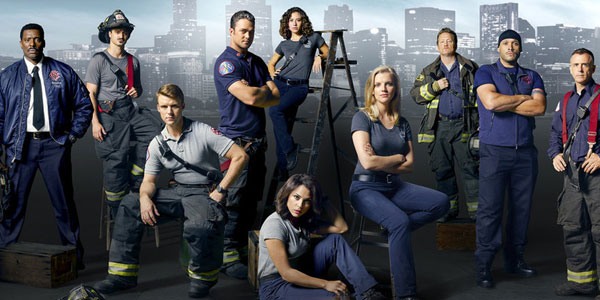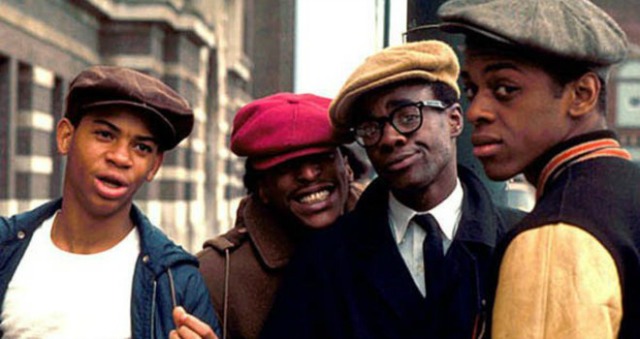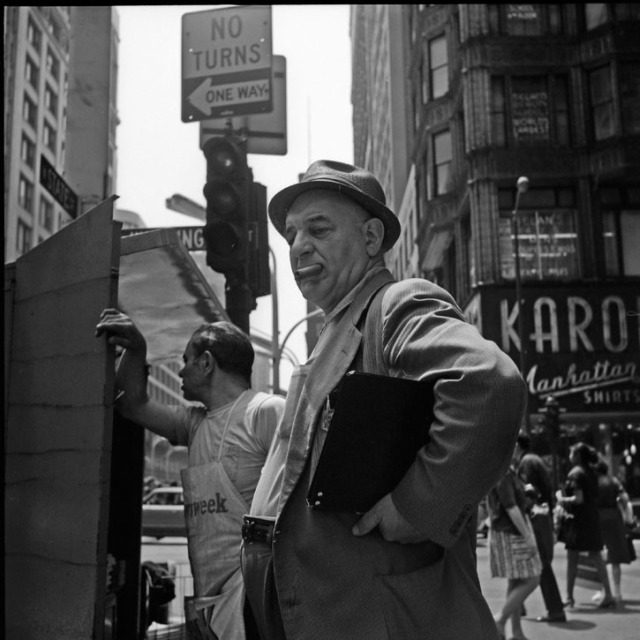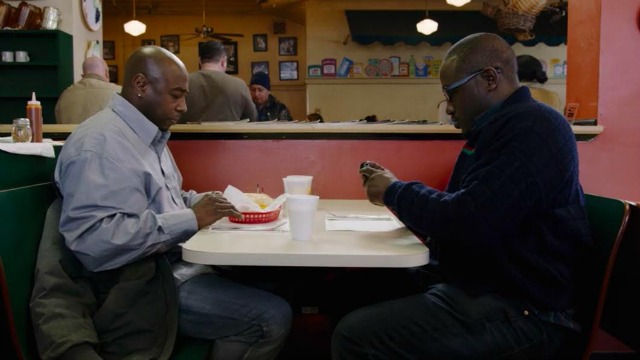The Best Films & TV Shows That Take Place In Chicago
By Lisa White in Arts & Entertainment on Mar 28, 2017 8:07PM
It’s no surprise Chicago has a rich history as a backdrop for both big and small screens. But we’re not just some pretty face—sure, it’s easy to set up shop filming our beautiful skyline, but oh-so-cruel to turn around and make us pretend Chicago is just another New York or Gotham City (we’re looking at you, The Dark Knight and Empire). Other great series call Chicago home, but barely set foot filming in town (cough Happy Endings, The League cough). We’ve rounded up few of our favorite films and television shows that truly give Chicago some serious love, from playing the part of leading lady or major supporting cast, these picks are true cinematic odes to our city.
Ferris Bueller’s Day Off
One of John Hughes’ many love letters to the city, Ferris Bueller takes the cake showcasing the director’s Chicago pride. Landmark shots of Marina City and Tribune Tower welcome moviegoers before Ferris and his band of merry ditchers enjoy views high up at the Skydeck at Willis Tower (rightfully Sears back then), cheer on a game at Wrigley Field, join the Von Steuben parade, and take in George Seurat’s “A Sunday on La Grande Jatte.” Not a bad way to spend a day cutting class.
High Fidelity
Originally set in London in Nick Hornby’s novel, the film adaptation plopped Rob Gordon down into Chicago in the middle of Wicker Park, which worked perfectly while the hood was still an epicenter of cool during the film’s late ‘90s timeframe. Gordon’s record shop is eerily reminiscent of a handful of similar nearby spots, and memorable movie moments capture some gone but not forgotten Chicago live music favorites (Lounge Ax, Double Door). The storyline itself isn’t far fetched if you’ve dated in Chicago, making the film seem almost autobiographical in nature at times.

The Dick Wolf empire (also known as the Chicago franchise)
Since 2012, Dick Wolf and his team have created a television drama network whose biggest star across every episode and series is our own hometown. Chicago Fire, Chicago P.D., Chicago Med and Chicago Justice follow the lives of hardworking Chicago characters as they face daily challenges throughout the city, many reminiscent of recent headlines (similar in style at times to Wolf’s Law & Order franchise). The show not only uses our city as a backdrop and the basis of many storylines, but employs a ton of Chicago actors while shooting in the city. And although Molly’s is no longer filmed on location at Lottie’s (the show now shoots those scenes on a set at Cinespace Chicago Film Studios), you can still stop by the local bar and toast the financial success the Chicago franchise has brought to our local film industry.
The Untouchables
Brian De Palma’s ode to Chicago gangster history during Prohibition is not only a tense tale of taking down Al Capone, but visually captures the beautiful architecture of our city. With a David Mamet screenplay and a score from the legendary Ennio Morricone, it’s no surprise the film was a commercial and critical success that has aged gracefully in the pantheon of gangster films. From explosions underneath the Chicago ‘L’ to a shoot-out in Union Station, our city is the perfect looming backdrop for such a tall tale. Not to mention a gorgeous backdrop during scenes shot at the Rookery building, in and outside Roosevelt University and underneath the Tiffany dome in Preston Bradley Hall. It’s no surprise the classic film has many a fan, including internationally renown graffiti artist Banksy who chose to pay tribute to the film while visiting the city.

Cooley High
Cooley High captures the innocence and anguish of being a teenager on the cusp of adulthood with a feverish pace full of energy, mischief and raging hormones, all set in the center of Cabrini-Green in the 1960s. From skipping school and jumping turnstiles on the CTA to necking during slow songs at high school parties, best friends Preach and Cochise spend their last days at Edwin G. Cooley Vocational High School anxiously waiting to get out into the real world. Screenwriter Eric Monte based much of the movie on his own teenage years attending Cooley High and growing up in Cabrini-Green, and although tragedy befalls the friends (and sadly some of the actors in real life), the movie is full of optimistic youthful moments similar to what Monte experienced growing up in the infamous housing project. It also has one of the best movie soundtracks around, full of Motown and Soul Music hits including The Supremes, Martha and the Vandellas, and Stevie Wonder.
Shameless
Who hasn’t stood on the edge of North Avenue beach and yelled at God like Frank Gallagher does in this Showtime hit? The Gallagher family brings to life tough realities many Chicagoans face while also championing the close bond of those you love and the hustle to survive in a city that can be as cruel as it can be kind. The Gallagher’s live in North Lawndale, a Chicago area not always showcased in a positive light in pop culture, and it’s nice to see the genuine community and family they’ve built within their neighborhood, a common setting across the city. The writing is honest, incredibly vulnerable and painful at times, crass but also whip-smart, making it easy to cheer on even the most dysfunctional character as they scheme and survive across Chicago.
The Blues Brothers
One of the better movies spawned from a Saturday Night Live skit, starring the only Belushi brother we’ll publicly claim as our own, Jake and Elwood Blues tear through Chicago on a mission from God soundtracked by some truly legendary tunes. After their iconic scene jumping the Calumet River right, the pair have a run-in with police over a bevy of unpaid parking tickets (a familiar situation for many Chicagoans) and spend the rest of the film on the run from the law while attempting to get the band back together for a worthy cause. The duo of course saves the day, only after destroying at least a dozen Chicago cop cars and turning “the honorable Richard J. Daley Plaza” into a drive-thru.
Hoop Dreams
Steve James took the story of two young African-American basketball stars and their dreams of going pro and created one of the most critically acclaimed modern documentaries that explores a multitude of issues still relevant today. The film explores the divisions of race, economic and social class as the two teens struggle against numerous odds to use their athletic talents to escape the poverty and violence that plagues the neighborhoods they call home. Hoop Dreams breaks down the complicated situations and relationships that are major parts of numerous Chicago neighborhoods, showing a different vantage point for the many Americans who assume they know anything about our city based on a few national headlines. James does this again with his other incredibly important Chicago documentary The Interrupters, but Hoop Dreams is where it all began.

Photo by Vivian Maier
Finding Vivian Maier
Like any major metropolis, Chicago has no shortage of eccentric characters. If it wasn’t for a few Chicagoans, the nanny who has found posthumous fame as a photographer might have faded into history as just another stranger you no longer see around your neighborhood. Instead, Vivian Maier, who lived a simple life of obscurity while privately capturing a massive amount of Chicago life on film, is getting much-deserved praise for her wonderful talent as a photographer. The documentary follows John Maloof, who purchased a large portion of Maier’s work at auction, as he becomes obsessed with piecing together the puzzle of a mysterious and private woman as he works tirelessly to bring to light her incredible art.

Sarno's Restaurant / 'Easy'
Easy
Joe Swanberg’s love of Chicago is well documented, from his early indie hit Hannah Takes the Stairs to Drinking Buddies, which focuses on the lives of a few employees working Revolution Brewing. But his Chicago love reaches a crescendo in the Netflix series Easy. It’s essentially a who’s who of spots frequented by many locals (Handlebar, Lost Lake, Baker & Miller, Dark Matter Coffee, Dusek’s, the Davis Theater, City Lit and a handful of local breweries all make the cut), and even includes works from Chicago artists (Don’t Fret, Jeffrey Brown). Although it would be nice to see the next season head farther south than Pilsen, Swanberg is keeping it local after a callout last month looking for more Chicago art, with a focus on queer artists, to be showcased in upcoming episodes. Watching the flawed characters stumble through the pitfalls of life at the spots we frequent on any given day can feel eerie at times (hello, past mistakes), but the show perfectly mirrors at least a handful of aspects of life for many Chicagoans.

E.R.
Before Dick Wolf came to town, America fell in love with the drama both inside and out of the emergency room on NBC’s E.R. The long-running show, which aired for 15 seasons, helped launch the careers of George Clooney and Julianna Margulies while captivating audiences with the tumultuous lives of the doctors who worked at fictitious County General Hospital. Filmed throughout the city, it wasn’t unusual to come across E.R. shooting a scene on a CTA platform or dark corner block.

Risky Business
Yes, it’s set in the North Shore, but like any suburban teen with excess income left to their own devices, Joel Goodson’s night of vice eventually leads him into the heart of the city. Sure, the movie is iconic thanks to Tom Cruise’s pants off dance off early on (you know the one). But second runner up for memorable movie moment is Cruise and costar Rebecca De Mornay getting busy on the CTA, which left many viewers hot and bothered but likely turned the stomachs of a handful of commuters who use our often grimey public transit system. In the end, a hairbrain scheme to get the money to fix his Dad’s Porsche that fell into Lake Michigan feels very North Shore teen goes rogue, but Goodson (yup, that’s really the character’s name) still ends up on top. North Shore affluence wins again.